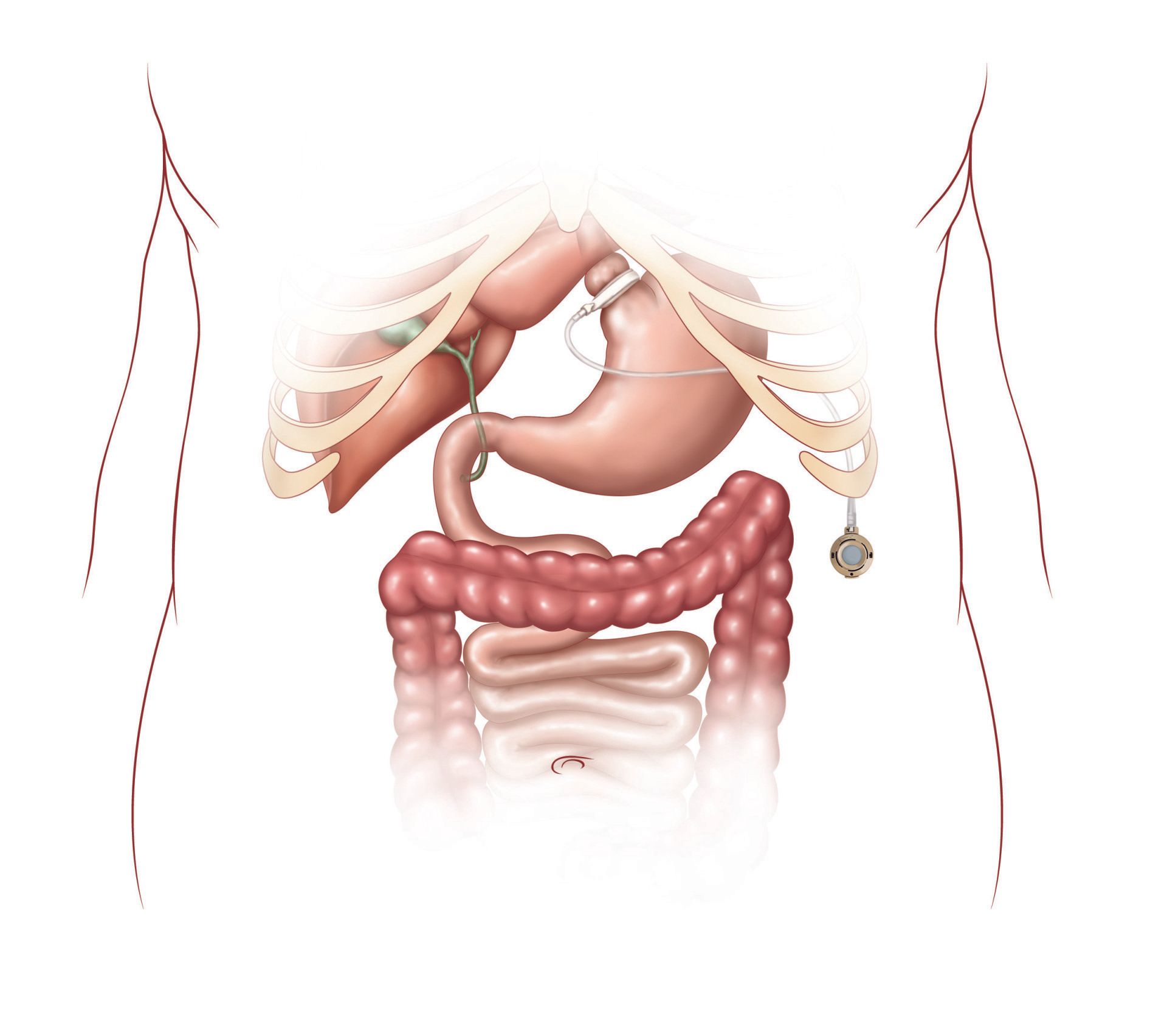Gastric Band
What is the Gastric Band?
The Adjustable Gastric Band – often called the Gastric Band or simply called Lapband – involves an inflatable band that is placed around the upper portion of the stomach, creating a small stomach pouch above the band, and the rest of the stomach below the band.
About the Gastric Band Procedure
The size of the stomach opening can be adjusted by filling the band with sterile saline, which is injected through a port placed under the skin.
Reducing the size of the opening is done gradually over time with repeated adjustments or “fills.” The notion that the band is a restrictive procedure (works by restricting how much food can be consumed per meal and by restricting the emptying of the food through the band) has been challenged by studies that show the food passes rather quickly through the band, and that absence of hunger or feeling of being satisfied was not related to food remaining in the pouch above the band. What is known is that there is no malabsorption; the food is digested and absorbed as it would be normally.
This operation is the least favourable procedure of our group, as Dr Niazi believes all of the gastric bands will need to be removed one day, sooner or later!
Advantages of Gastric Band Weight Loss Surgery
- Reduces the amount of food the stomach can hold
- Induces excess weight loss of approximately 40 – 50%
- Involves no cutting of the stomach or rerouting of the intestines
- Has the lowest rate of early postoperative complications and mortality among the approved bariatric procedures
- Has the lowest risk for vitamin/mineral deficiencies
Disadvantages of Gastric Band Weight Loss Surgery
- Slower and less early weight loss than other surgical procedures
- A greater percentage of patients failing to lose at least 50% of excess body weight compared to the other surgeries commonly performed
- Requires a foreign device to remain in the body
- Can result in possible band slippage or band erosion into the stomach in a small percentage of patients
- Can have mechanical problems with the band, tube or port in a small percentage of patients
- Can result in dilation of the esophagus if the patient overeats
- Requires strict adherence to the postoperative diet and to postoperative follow-up visits
- The highest rate of re-operation
- Most large academic centres stopped or close to stop doing lap band
Questions Relating to the Gastric Band
Is Gastric Banding always performed by laparoscopic (keyhole) Surgery?
Yes. Nowadays it is extremely rare to require conventional open surgery to perform gastric banding - indeed our surgeons have never had to convert to a major incision during a gastric banding procedure, even in patients who have had multiple previous abdominal operations. The benefits of laparascopic surgery include less discomfort, shorter hospital stay, earlier return to work, less abdominal adhesions, and reduced scarring.
Does the Gastric Band limit any physical activity?
No. After the initial recovery period you are free to do any physical activity you choose including aerobics, stretching and strenuous exercise.
How is the Band adjusted?
Adjustments are performed in our clinic by our doctors and surgeons. Occasionally they are done under X-ray but this is seldom necessary. Local anaesthesia is available but is usually not needed as the fine needle is passed through the scar (which is usually numb) over the access-port. When saline is added, the band becomes tighter, and vice versa. The process usually only takes a few minutes, and most patients say it is virtually painless. Whilst adjustments may be performed at any time, the majority are needed in the first 18 months or so, as the fat around the stomach diminishes.









